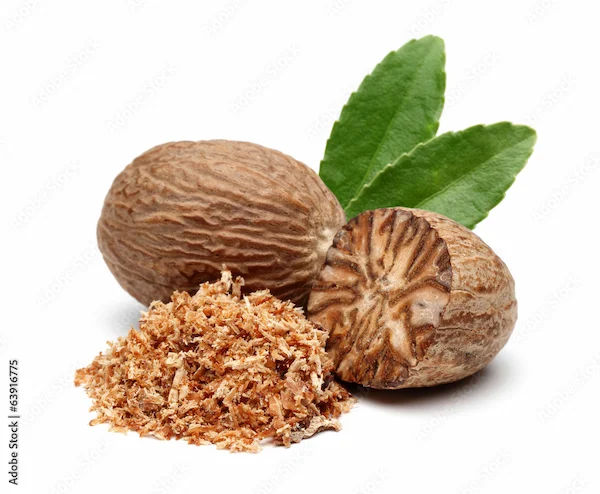How to Reduce Fungal Infection?
Learn effective ways to reduce fungal infections. Discover home remedies, over-the-counter treatments, and when to seek professional medical advice.

Written by Dr.Sonia Bhatt
Last updated on 3rd Jul, 2025
Fungal infections, also known as mycoses, are common skin conditions that affect millions of people worldwide. These infections are caused by fungi like yeast and moulds, and while they are most common on the skin, they can affect various other parts of the body, including nails, mucous membranes, and internal organs such as the lungs or brain. Fungal infections can range from mild conditions like athlete’s foot to more serious, systemic infections that affect the lungs, heart, and brain, particularly in individuals with weakened immune systems. In this article, we will explore the various types of fungal infections, the risk factors that increase your likelihood of contracting one, and the most effective ways to prevent and treat fungal infections.
What Are Fungal Infections?
Fungal infections, or mycosis, are diseases caused by fungi. The majority of these infections occur on the skin or nails but can also involve mucous membranes or more internal organs like the lungs, urinary tract, and brain. Fungi are microorganisms that exist naturally in the environment and on the human body, particularly in areas like the skin, mouth, and gastrointestinal tract.
However, when fungi begin to overgrow due to changes in the body’s environment (such as compromised immunity, moisture, or hormonal changes), they can cause infections.
Common fungi that lead to infection include:
Dermatophytes: Fungi that thrive on skin, nails, and hair (e.g., athlete’s foot, ringworm).
Candida: A yeast that commonly causes infections like oral thrush or vaginal yeast infections.
Molds: Environmental fungi that can cause serious infections like aspergillosis and histoplasmosis.
Who Is at Risk for Fungal Infections?
While anyone can develop a fungal infection, certain individuals are at higher risk, especially those with a weakened immune system or conditions that promote fungal growth. These risk factors include:
Weakened Immune System: Individuals with HIV/AIDS, those undergoing cancer treatments, or those on immunosuppressive drugs for autoimmune diseases or organ transplants.
Diabetes: High blood sugar can create an environment conducive to yeast growth, increasing the risk of infections like candidiasis.
Antibiotic Use: Extended use of antibiotics can alter the balance of bacteria on the skin and mucous membranes, making the body more vulnerable to fungal infections.
Moist Environments: Areas of the body prone to moisture, such as the feet, groin, and underarms, are more susceptible to fungal overgrowth.
Types of Fungal Infections
Fungal infections can be classified based on their location and depth in the body:
1.Superficial Fungal Infections: These affect the skin, nails, and mucous membranes.
Athlete’s Foot (Tinea Pedis): Fungal infection of the feet, often in between the toes.
Ringworm (Tinea Corporis): A highly contagious infection that appears as a circular rash with raised edges.
Candidiasis: Caused by the yeast Candida, this infection can affect the mouth (oral thrush), vagina (vaginal yeast infections), or skin folds (intertrigo).
Onychomycosis: Fungal infection of the nails, often causing discolouration, thickening, and crumbling of nails.
2.Subcutaneous Fungal Infections: These occur beneath the surface of the skin, typically following trauma or injury.
Sporotrichosis: Often referred to as "rose gardener’s disease," caused by the fungus Sporothrix.
Chromoblastomycosis: Chronic infection that leads to wart-like growths on the skin.
Eumycetoma: Characterized by a swelling or abscess that often occurs on the feet.
3.Deep or Systemic Fungal Infections: These are severe infections that affect internal organs such as the lungs, brain, or heart.
Histoplasmosis: Caused by Histoplasma fungi, commonly found in soil enriched with bird or bat droppings.
Aspergillosis: Caused by the mould Aspergillus, leading to lung infections and other systemic symptoms.
Candidemia: When Candida infections spread to the bloodstream, it can cause severe complications.
Cryptococcosis: Fungal infection that often affects the lungs and brain, commonly seen in immunocompromised patients.
Symptoms of Fungal Infections
The symptoms of fungal infections can vary depending on their location and severity. Common signs of superficial infections include:
Itching or redness on the affected skin
Flaky or peeling skin
Discolored nails, thickened nails, or crumbling nails
White patches in the mouth or throat (oral thrush)
Vaginal itching or abnormal discharge (yeast infections)
For deep infections, symptoms are more serious and may include:
Cough, possibly with blood
Fatigue, fever, and muscle aches
Shortness of breath
Headache, confusion, or neck pain (infections in the brain)
Blurred vision (if the eyes are involved)
How to Reduce the Risk of Fungal Infections
Preventing fungal infections is essential, especially for those at high risk. Here are strategies to reduce the likelihood of fungal infections:
1.Maintain Proper Hygiene:
Shower regularly, particularly after exercising or swimming.
Keep skin dry and clean, especially in moist areas like the feet, groin, and underarms.
Change socks and underwear frequently to avoid fungal growth.
2.Wear Appropriate Footwear:
Avoid walking barefoot in public places like pools, gyms, and showers.
Choose breathable footwear and change socks regularly.
3.Use Antifungal Products:
Consider using antifungal powders or sprays in areas prone to infection, such as between the toes or in the groin area.
4.Avoid Sharing Personal Items:
Don’t share towels, clothing, or sporting equipment that may be contaminated with fungi.
5.Protective Clothing:
If you work with soil, wear gloves, long sleeves, and boots to prevent exposure to environmental fungi.
6.Limit Antibiotic Use:
Use antibiotics only as prescribed by a healthcare provider, as overuse can lead to fungal overgrowth, especially yeast.
7.Boost Your Immune System:
Eating a healthy diet, exercising regularly, and staying hydrated can help keep your immune system strong and reduce the risk of infections.
Consult Top General Physicians
Treatment Options for Fungal Infections
Fungal infections are commonly treated with antifungal medications, which can be administered topically, orally, or intravenously, depending on the severity and location of the infection. Here’s a brief overview of the treatment options:
1.Topical Treatments
Creams and Ointments: Applied directly to the affected area, topical antifungals like clotrimazole, terbinafine, and ketoconazole are effective for skin conditions such as athlete's foot, ringworm, and candidiasis.
Shampoos: Special antifungal shampoos like ketoconazole or selenium sulfide can treat scalp fungal infections (e.g., tinea capitis).
Powders and Sprays: These are useful for preventing moisture buildup, especially in areas prone to fungal growth like the feet and groin.
2.Oral Antifungal Medications
For more severe or widespread infections, oral antifungals are prescribed. These include:
Fluconazole: Used for infections like candidiasis, oral thrush, and systemic yeast infections.
Itraconazole: Effective against infections like aspergillosis and blastomycosis.
Terbinafine: Often prescribed for nail infections or tinea corporis. Oral medications are essential for deep or internal fungal infections, especially when topical treatments are insufficient.
3.Intravenous (IV) Antifungal Medications
Intravenous antifungal medications may be necessary for life-threatening or systemic infections. Common IV treatments include:
Amphotericin B: Used for severe infections like cryptococcal meningitis or mucormycosis.
Echinocandins: Medications like caspofungin are used for invasive candidiasis and other systemic fungal infections.
4.Adjunctive Therapies and Home Remedies
Probiotics: Useful for managing Candida overgrowth, particularly after antibiotic use.
Home Remedies: While not substitutes for professional treatment, remedies like tea tree oil, apple cider vinegar, and garlic may provide relief for mild skin infections.
Conclusion
Fungal infections, while often treatable, can be quite persistent and uncomfortable if left unchecked. The treatment approach depends on the location and severity of the infection. Topical antifungal medications are typically effective for mild skin and nail infections, while oral antifungals are prescribed for more extensive or internal fungal infections. For life-threatening infections, intravenous antifungals can be useful. In all cases, it’s important to follow the prescribed treatment plan and complete the full course of medication to prevent the infection from recurring. If you suspect you have a fungal infection, it is essential to consult a healthcare provider to determine the best treatment option for your condition.
Consult Top General Physicians
Consult Top General Physicians

Dr. Chethan T L
General Physician/ Internal Medicine Specialist
5 Years • MBBS, MD, DNB (General Medicine)
Bengaluru
Apollo Medical Center, Marathahalli, Bengaluru

Dr. Rajib Ghose
General Physician/ Internal Medicine Specialist
25 Years • MBBS
East Midnapore
VIVEKANANDA SEBA SADAN, East Midnapore

Dr. Dhankecha Mayank
General Practitioner
6 Years • MBBS
Hyderabad
Apollo 24|7 Clinic - Telangana, Hyderabad

Dr. Vasanthasree Nair
General Practitioner
15 Years • MBBS
Angamaly
Apollo 24|7 Clinic - Kerala, Angamaly
(500+ Patients)

Dr. M L Ezhilarasan
General Practitioner
6 Years • MBBS
Visakhapatnam
Apollo 24|7 Clinic - Andhra Pradesh, Visakhapatnam
Consult Top General Physicians

Dr. Chethan T L
General Physician/ Internal Medicine Specialist
5 Years • MBBS, MD, DNB (General Medicine)
Bengaluru
Apollo Medical Center, Marathahalli, Bengaluru

Dr. Rajib Ghose
General Physician/ Internal Medicine Specialist
25 Years • MBBS
East Midnapore
VIVEKANANDA SEBA SADAN, East Midnapore

Dr. Dhankecha Mayank
General Practitioner
6 Years • MBBS
Hyderabad
Apollo 24|7 Clinic - Telangana, Hyderabad

Dr. Vasanthasree Nair
General Practitioner
15 Years • MBBS
Angamaly
Apollo 24|7 Clinic - Kerala, Angamaly
(500+ Patients)

Dr. M L Ezhilarasan
General Practitioner
6 Years • MBBS
Visakhapatnam
Apollo 24|7 Clinic - Andhra Pradesh, Visakhapatnam




